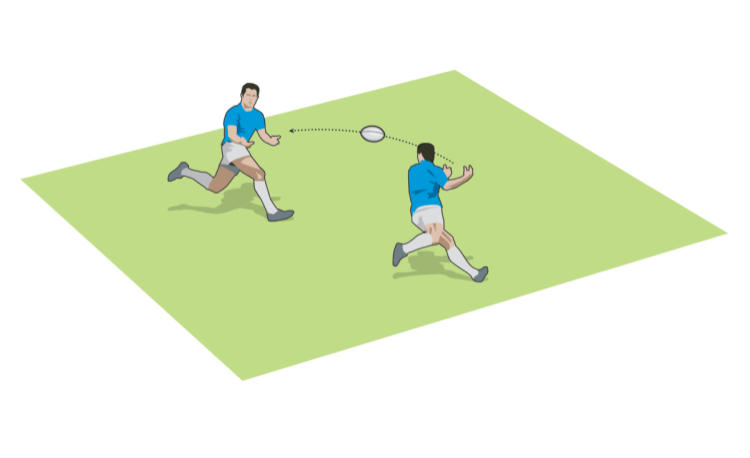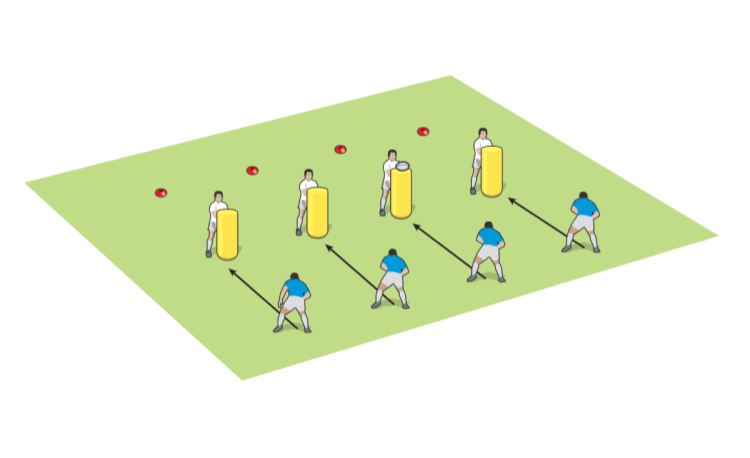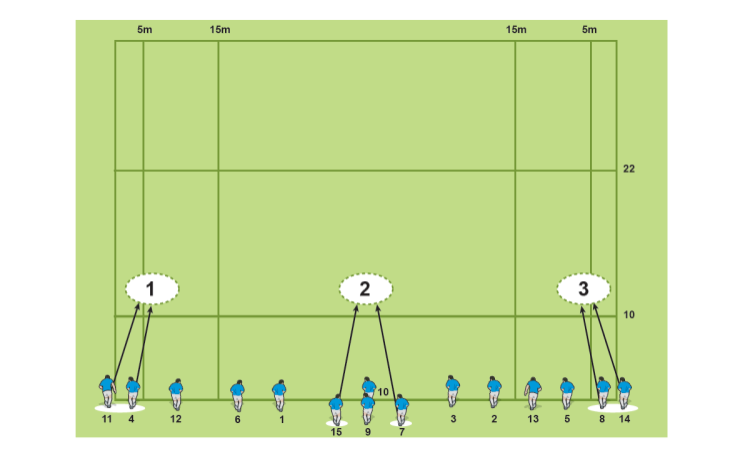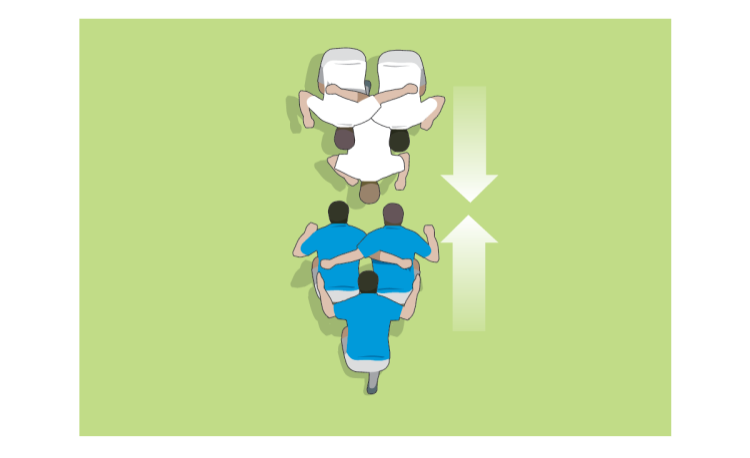You are viewing
1 of your 2 free articles
Colour call: Heads up decision making activity
Attackby Dan Cottrell
If you are a good decision maker, you'll keep your head up and look at the defence before acting. To develop players capable of making quick decisions, you need to give them plenty of opportunities to practise this technique under pressure.
Here's a simple exercise to set and improve your players' ability to play heads up rugby.
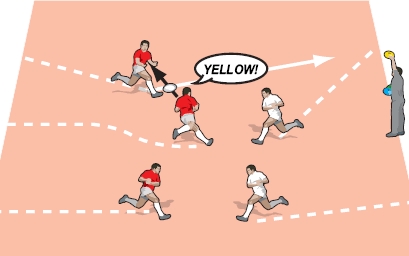
Set up a three versus two rugby drill in favour of the attack. The ball always starts with the middle player of the attacking three.
Stand behind the defenders. As the attackers start, hold up a coloured cone. The ball carrier has to shout out the colour of the cone as he is analysing the defence and making his decision about how and where to attack.
As your players improve, you can change cones during the attack, so all the ball carriers have to constantly scan what is in front of them while attacking.
Some players may find this rugby drill very difficult at first. If so, let them walk through the rugby drill to start with before increasing the pace.
Or, start with a three v one.
Use the cones to indicate different passes/kicks that have to be used. For example, a yellow cone means only one hand passes, a blue cone means a kick after every pass.
Since the defence doesn't know the signal, the attackers at least have a chance to surprise the defenders.
Here's a simple exercise to set and improve your players' ability to play heads up rugby.

Set up a three versus two rugby drill in favour of the attack. The ball always starts with the middle player of the attacking three.
Stand behind the defenders. As the attackers start, hold up a coloured cone. The ball carrier has to shout out the colour of the cone as he is analysing the defence and making his decision about how and where to attack.
As your players improve, you can change cones during the attack, so all the ball carriers have to constantly scan what is in front of them while attacking.
Easier to harder
Some players may find this rugby drill very difficult at first. If so, let them walk through the rugby drill to start with before increasing the pace.
Or, start with a three v one.
Developments
Use the cones to indicate different passes/kicks that have to be used. For example, a yellow cone means only one hand passes, a blue cone means a kick after every pass.
Since the defence doesn't know the signal, the attackers at least have a chance to surprise the defenders.
Newsletter Sign Up
Coaches Testimonials

Gerald Kearney, Downtown Las Vegas Soccer Club

Paul Butler, Florida, USA

Rick Shields, Springboro, USA

Tony Green, Pierrefonds Titans, Quebec, Canada
Subscribe Today
Be a more effective, more successful rugby coach
In a recent survey 89% of subscribers said Rugby Coach Weekly makes them more confident, 91% said Rugby Coach Weekly makes them a more effective coach and 93% said Rugby Coach Weekly makes them more inspired.
Get Weekly Inspiration
All the latest techniques and approaches
Rugby Coach Weekly offers proven and easy to use rugby drills, coaching sessions, practice plans, small-sided games, warm-ups, training tips and advice.
We've been at the cutting edge of rugby coaching since we launched in 2005, creating resources for the grassroots youth coach, following best practice from around the world and insights from the professional game.
More from us
© 2023 Rugby Coach Weekly
Part of Green Star Media Ltd. Company number: 3008779
We use cookies so we can provide you with the best online experience. By continuing to browse this site you are agreeing to our use of cookies. Click on the banner to find out more.







